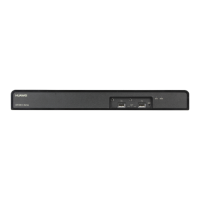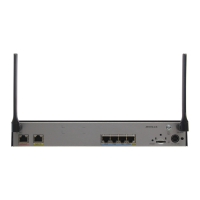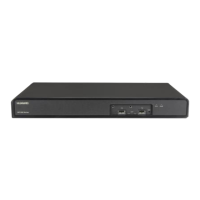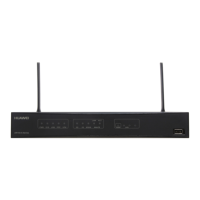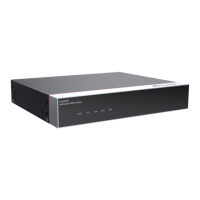8.1 Accessing Another Device
To manage configurations or use files on a device other than the device you are logged in to,
you can use Telnet, FTP, TFTP, or SSH to access that device.
Figure 8-1 Networking diagram for accessing another device from the router
Network
Network
PC
Client
Server
As shown in Figure 8-1, when you run a terminal emulation or Telnet program on a PC to
connect to the router, the router can still function as a client to access another device on the
network. There are several ways to accomplish this.
8.1.1 Telnet Method
To configure and manage a remote device on the network, you can use the router that you have
logged in to as a client to log in to that device, or use a redirection terminal service on
therouter to log in to that device.
Telnet is an application layer protocol in the TCP/IP protocol suite. It provides remote login and
a virtual terminal service.
The AR1200 provides the following Telnet services:
l Telnet server: You can run the Telnet client program on a PC to log in to a router to complete
configuration and management tasks. The router acts as a Telnet server.
l Telnet client: You can run the terminal emulation program or the Telnet client program on
a PC to connect with the router. You can then run the telnet command to log in to other
routers to configure and manage them. As shown in Figure 8-2,Router A serves as both a
Telnet server and a Telnet client.
Figure 8-2 Telnet client services
RouterAPC
RouterB
Telnet Session 1
Telnet Session2
Telnet Server
l Interruption of Telnet services
In Telnet connection, two shortcut key combinations can terminate the connection.
As shown in Figure 8-3, Router A logs in to Router B through Telnet, and Router B logs
in to Router C through Telnet. Thus, a cascade network is formed. In this case, Router A
Huawei AR1200 Series Enterprise Routers
Configuration Guide - Basic Configuration 8 Accessing Another Device
Issue 04 (2012-05-15) Huawei Proprietary and Confidential
Copyright © Huawei Technologies Co., Ltd.
144
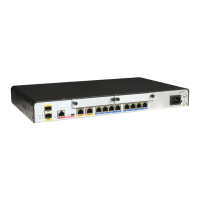
